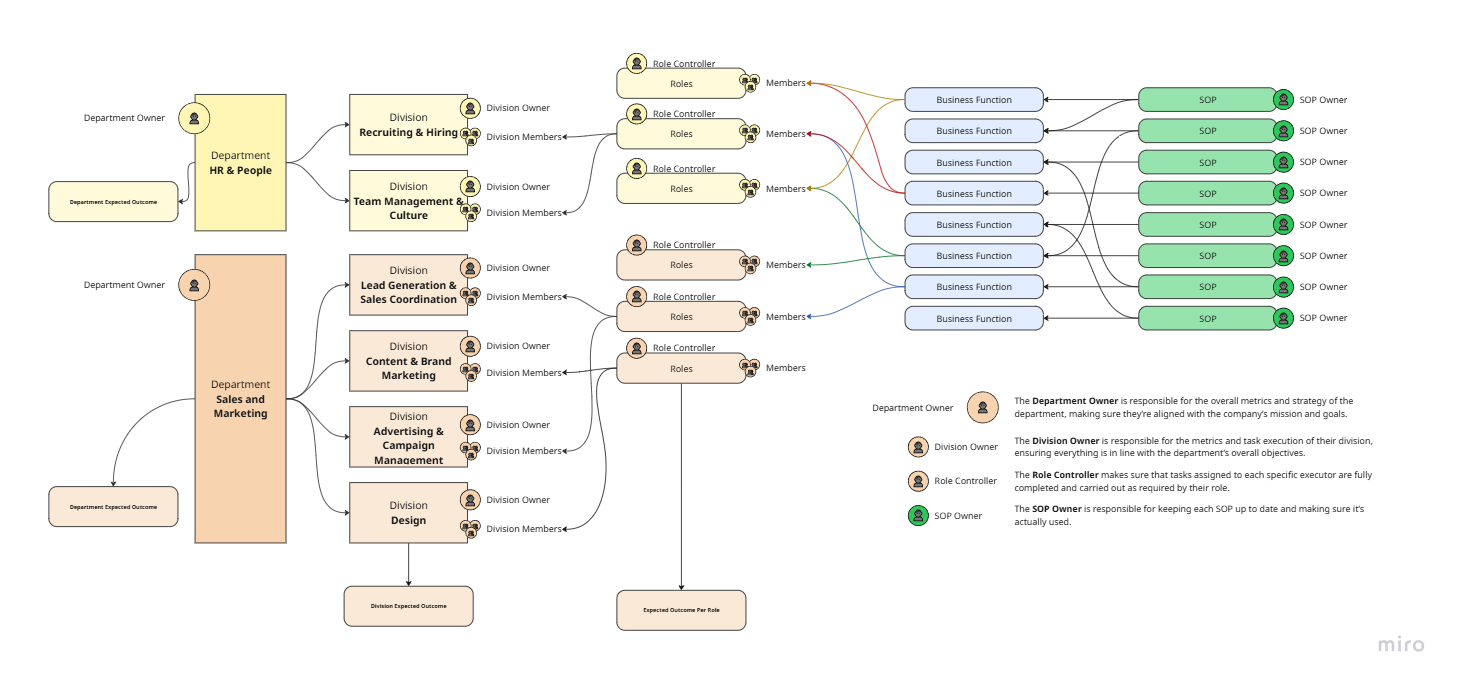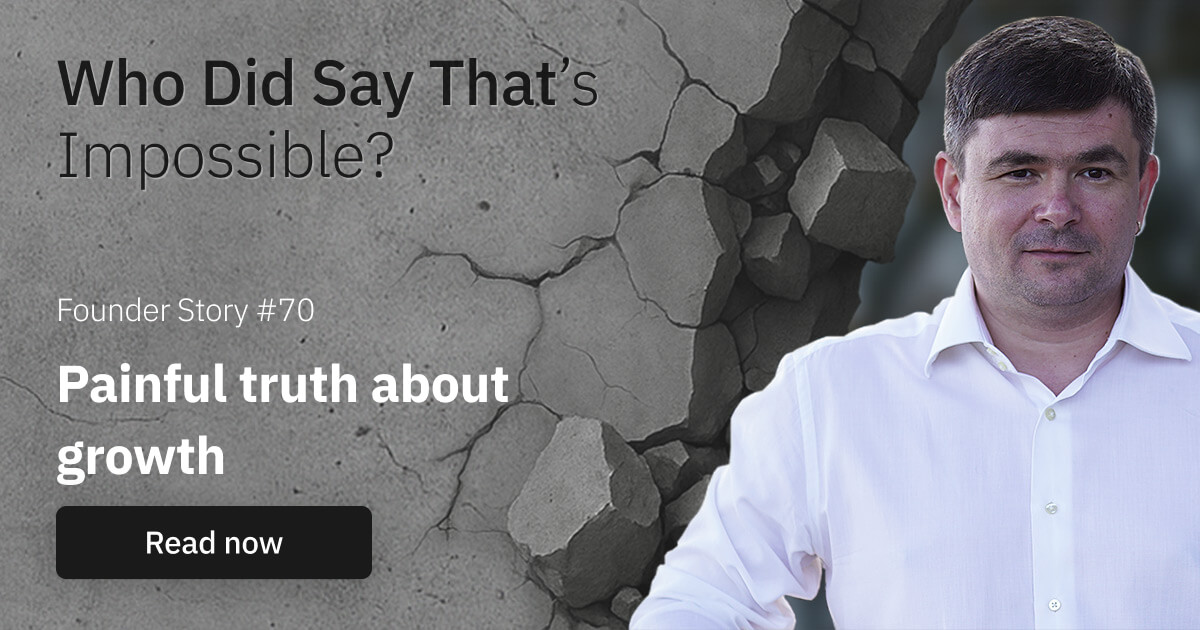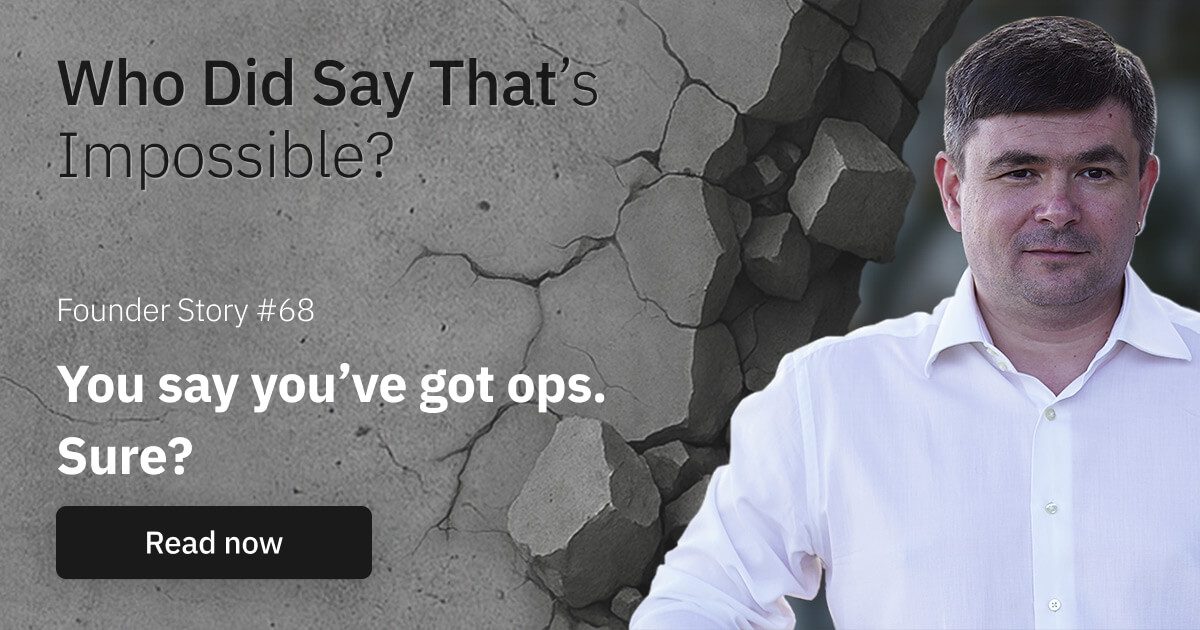No structure? Say goodbye to growth
Or minute of scaling on sand, thinking it’s strategy
Most founders think their biggest challenge is people.
People who don’t take ownership.
People who drop the ball.
People who don’t care as much as they do.
I used to think so too.
In the early stages of my business, I obsessed over hiring. Getting the right talent, motivating them, keeping them.
I believed that with the right people, everything else would follow.
But I was wrong.
Because great people, without structure, become exhausted.
And average people, in a bad system, become dangerous.
I had to learn that the hard way.
The painful truth about “small business realities”
In small companies, especially those with 5 to 15 people, the boundaries are blurry. You can’t afford one person per role. Everyone wears three hats.You build hybrid teams, generalists, and hope it somehow works. And it can.
T-shaped people are not a liability. They’re an incredible asset, if you give them context.
But I failed to do that. I assumed effort was enough.
I thought: if people work hard, results will follow.
Until one day, I understood: our developers were logging hours into a black hole.
No one knew what the client really wanted. No one knew why the project even mattered.
They were working with blindfolds on, and I was the one who handed them out.
We weren’t failing because they didn’t care, but we were failing because I never gave them a structure that showed them how to care effectively.
Structure is not a process. It’s a system of alignment.
At some point, I stepped back and mapped out every core function of the business.
- Sales & marketing.
- Service & delivery.
- Finance & tax.
- R&D & planning.
- People & internal operations.
In large companies, each of these is a department, with layers, roles, metrics.
In small business, one person might manage three blocks. Or two people might fumble across all five.
And that’s fine, but only if the structure supports it.
If the org doesn’t clarify:
- Who owns what
- What “done” looks like
- Where knowledge lives
- How to measure success
…then the business becomes dependent on memory, personality, and luck.
And that’s a fragile place to grow from.
Hierarchy exists whether you like it or not
Here’s another uncomfortable truth:
Even in a two-person company, there’s a hierarchy.
Someone pays the bills. Someone makes the final call.
That person sets the rules, whether it’s explicit or not.
But most founders avoid formalizing it.
They fear they’ll “scare off” their team with org charts or SOPs.
They believe hierarchy is a corporate thing, not a startup thing.
Until the day their head of sales walks out with a spreadsheet of all their clients.
Or their top engineer leaves, and takes their undocumented product knowledge with them.
Or a marketing lead walks mid-campaign, and no one knows the logic behind what’s running.
For a big company, it’s a bump. For a small company, it’s an existential threat.
Because without structure, there’s no resilience.
Without roles, there’s no redundancy.
Without documentation, there’s no memory.
You don’t lose a person. You lose everything they knew.
Why roles beat resumes
One of the most powerful shifts I made was this:
Stop tying functions to people.
Start tying functions to roles.
Alex doesn’t follow up clients.
The Client Manager role does.
Once you design roles with clear ownership and outcomes, people can step into them, grow through them, and, if needed, be replaced without a total reset.
Roles give you:
- Clarity
- Control
- Continuity
And most importantly — freedom from dependency on personalities.
Now, instead of “Jane writes proposals,”
…it’s “The Pre-Sales Coordinator prepares proposals based on XYZ SOP.”
And that SOP lives in your system.
Not in someone’s brain.
This is how you turn a chaotic team into a functioning organization, even if you’re only 7 people strong.
Structure doesn’t slow you down. It sets you free.
Founders avoid structure because they think it’ll box them in. But the real prison is running a company that breaks every time you grow. That stalls every time someone leaves. That loses momentum every time you look away.
You can’t delegate without structure.
You can’t scale without structure.
You can’t rest without structure.
And if you’re constantly solving the same issues over and over again, I guarantee:
The problem isn’t the people.
It’s the system they’re forced to work inside.

Whether you’re selling pastries, plumbing services, or paid ads, your business has a structure.
The question is whether you designed it, or just let it happen.
And if you didn’t design it, you’re not leading it.
You’re just chasing it.
Disclaimer.
Every business has its nuances, and every founder has their unique context and resources. Whether or not my advice applies depends on your situation, experience, and needs. But one thing is universal—use your brain.
Think about how to apply the advice in your context before acting.
Your way.
- Eugene
Join the “most offbeat” Businessletter on entrepreneurship.

Hi, I’m Eugene.
Over the past 20+ years, I’ve grown an international agency from one-person freelance to a multimillion-dollar business. I’ve led teams, scaled systems, burned out, rebuilt, and learned (the hard way) what it really takes to run a business that doesn’t consume your life.
I help them make sense of complexity, design simple systems, and create the kind of business they actually want to run.
More Stories
Founder Stories

The painful truth about growing a business
Or minute of realizing that “more people” isn’t the answer

Why optimization never ends (and why that’s good)
Or minute of making peace with the unfinished


